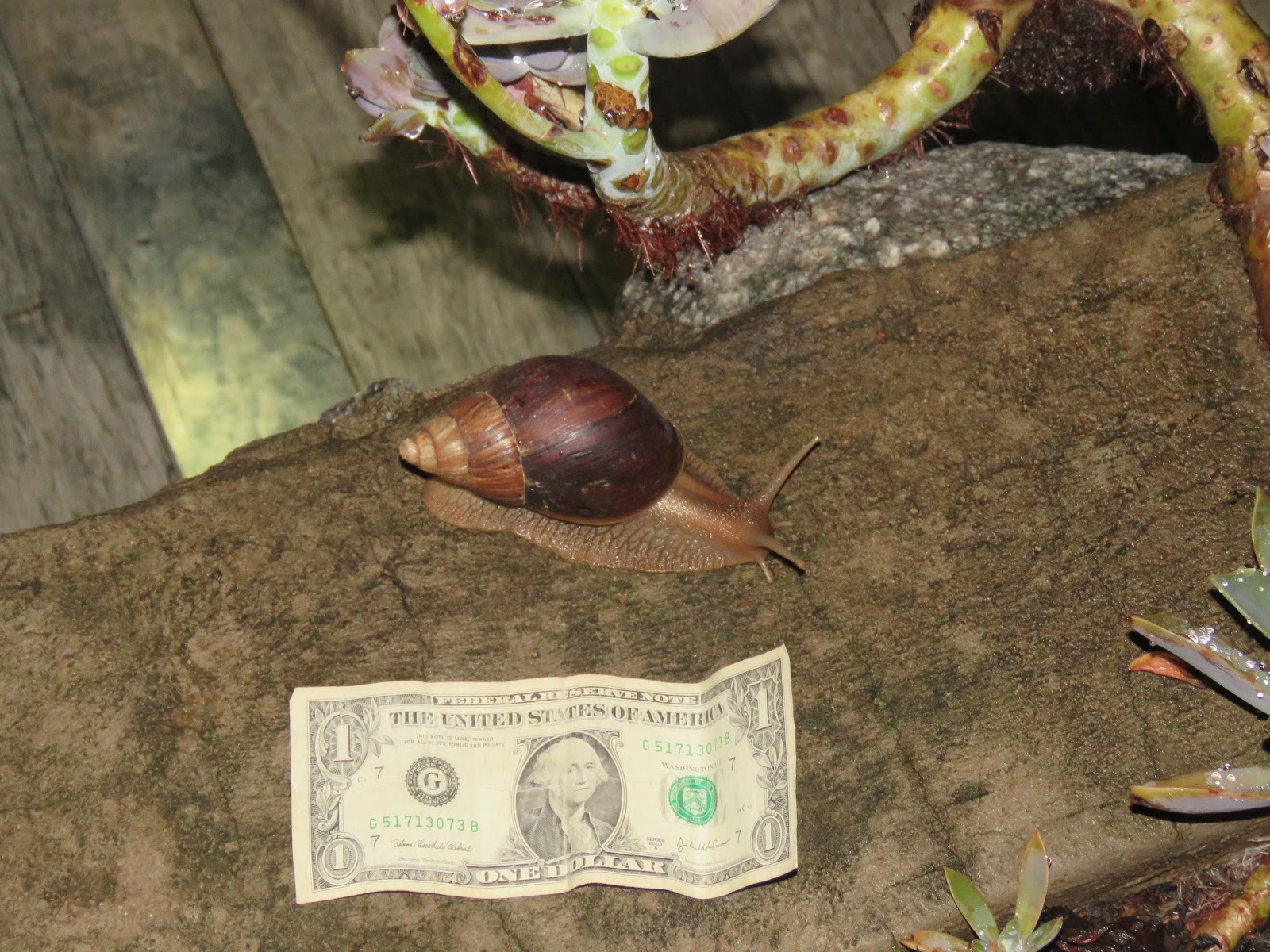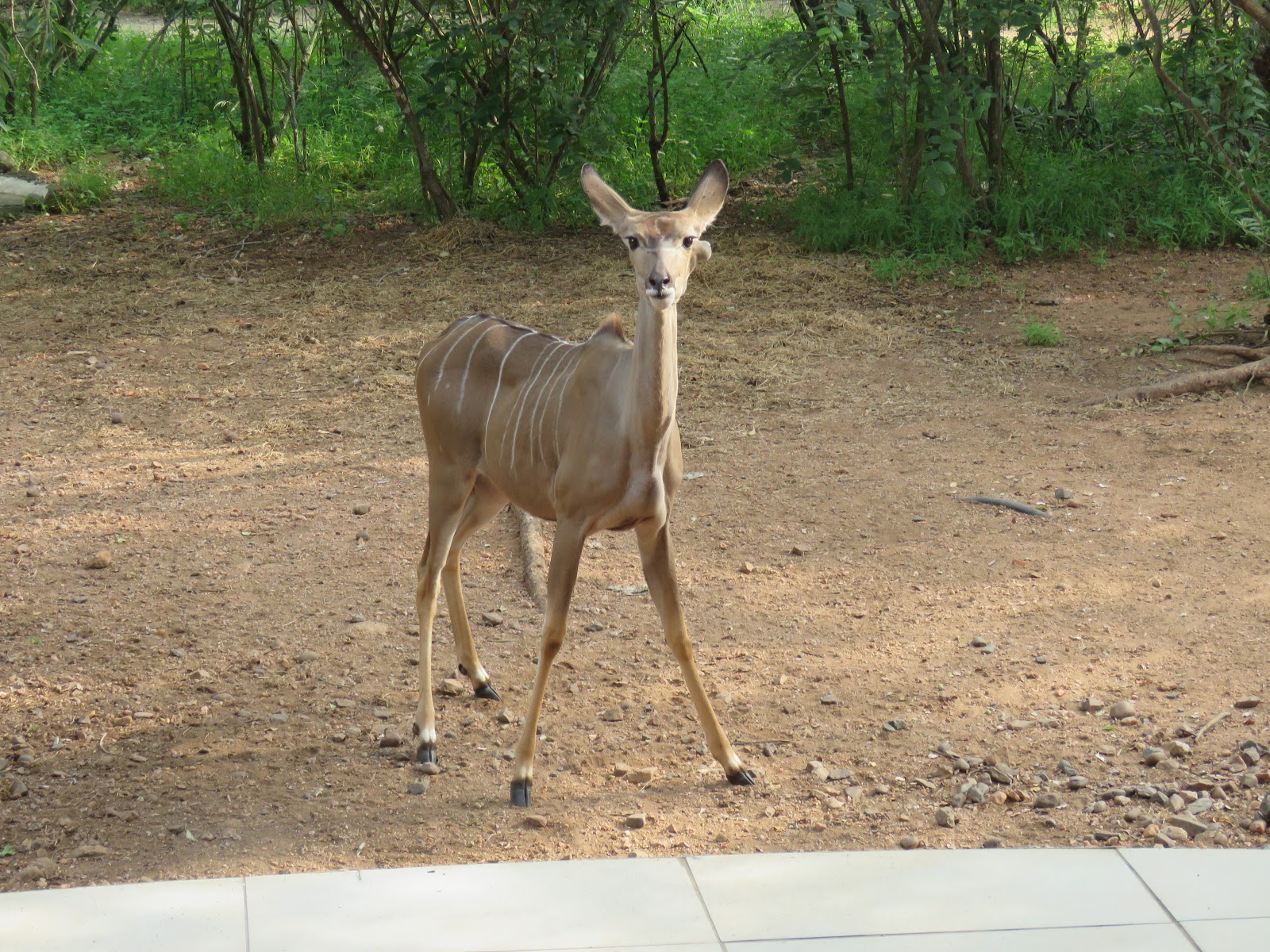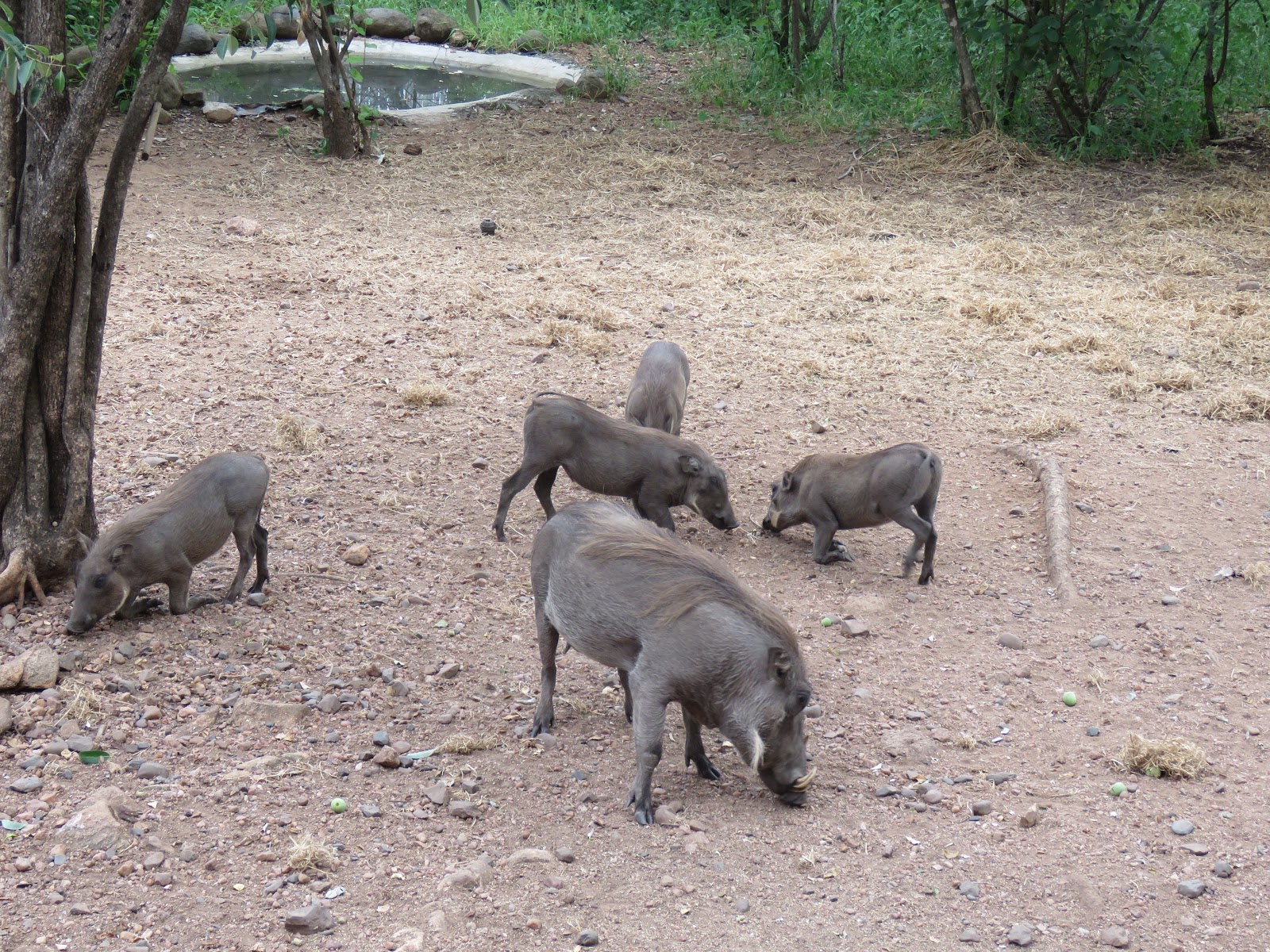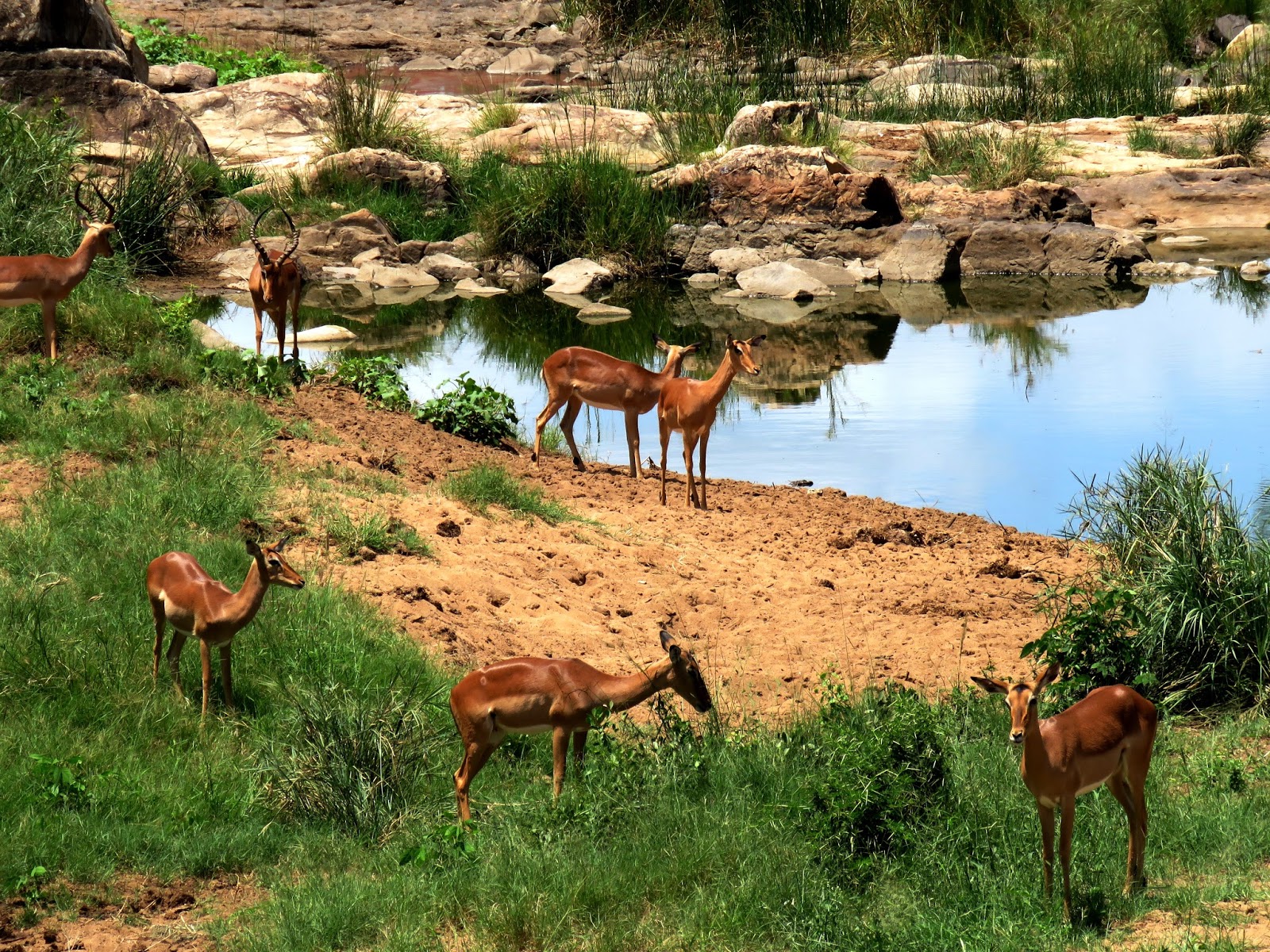 |
| Tom tossed some seeds to Frank and The Misses. |
“Sighting of the Day in the Bush”
 |
| Lately, Frank has been holding up one of his little legs he must have injured. |
Traveling to and from anywhere in the world is filled with expectations. Part of the excitement of traveling is wrapped around the anticipation of wonderful experiences yet to come as we visualize ourselves at various points of interest along the way.
We were thrown for a loop when this sudden unplanned heart surgery necessity cropped up about three weeks ago. We were only days away from leaving Marloth Park to head to Kenya for the photographic tour we’d anticipated for so long.
 |
| Frank and The Misses. and Ms. Bushbuck. |
Many times over these past six-plus years since we began our journey, people would ask, “What will you do if some urgent medical situation occurs and you have no home base, no insurance in the US, and you’re living in some remote town?”
The answer was always the same, “We’ll figure it out.” And when it happened years earlier than “expected” we did exactly that. In my medication-induced stupor and Tom’s state of utter exhaustion, we figured it out. Piece by piece, we canceled venues, flights, cruises, and hotel stays, losing a lot of money but finding a way and a place to recover so that in time, once again, we’ll be on the move.
 |
| There are several Ms. Bushbucks that come to call. |
The doctors suggested we don’t go anywhere until 90 days post surgery which transpired on February 12th. We plan to leave Africa on May 11th to head to Connemara, Ireland, for a peaceful three-month stay. This is precisely 88 days after the surgery. Close enough.
Sure, right now, there are days where I can’t imagine being ready for the long flight and drive to our holiday rental. But it is soon yet, only 19 days post-surgery. I have a long way to go, but I’m hoping and expecting I’ll be much more ambulatory and in considerably less pain than I’m feeling now.
If, for some reason, here again “expectations,” I’m not quite ready to go, we’d figure that out too. These changes always cost money but do provide options if one is willing to pay the price. And what’s is more important than good health?
 |
| Bushbucks and francolins get along quite well. |
Yes, we cautiously holding back a degree of enthusiasm in going directly to Ireland from here. In doing so, we’ve had to change many plans in between. As mentioned in this post from February 27th, that explains it all.
Sadly, we’ll miss visiting family for three weeks in the USA in April as previously planned. However, we’ll see them all in November, a mere seven months later. We’d played it out in our minds to be with family, which would have been a little over a month from now.
But staying here in South Africa made the most sense to be close to the doctors who have treated me through this process. Also, I can’t say I’d feel safe flying such a long distance after such a short period since the big surgery. The risk of blood clots is quite high in the three months after bypass surgery.
 |
| A little kudu antics over the pellets. |
Yes, our expectations for this period in time were very different than where we are now. But, we took this risk on October 31, 2012, when we left Minnesota to begin our years-long journey.
Still, we have no regrets. Still, I can say this past year, from February 11, 2018, the day we arrived in Marloth Park until February 11, 2019, has been one of the happiest and most fulfilling years of my life, and I “expect” Tom would agree.
In reality, we were probably in the right place at the right time for this “unexpected” health crisis to occur; top quality medical care at reasonable costs, a house we could continue to rent without the necessity of a cumbersome move and of course, friends all around us as an unbelievable support system.
 |
| Two boy kudus and one girl. Although there’s plenty of vegetation for them to eat since the huge rains, they still enjoy the pellets. |
Then again…there’s them…our beautiful wildlife friends who visit every day that brings so much joy, I can feel the positive hormones pumping through my body. There can’t be a much better source of aiding in healing than the wildlife that comes to call day after day, night after night.
My “expectation” is that they will continue to visit, and Mother Nature rarely disappoints.
We’ll be thinking of all of you who continue to write, sending the kindest and most thoughtful expressions and well wishes for good health and recovery! Have a fantastic Sunday!
Photo from one year ago today, March 3, 2018:
 |
| A youngster stopped to nurse. For more photos, please click here. |





































